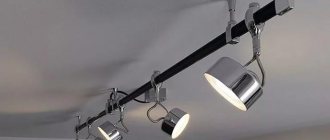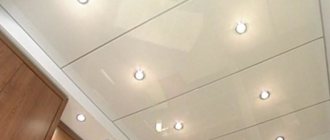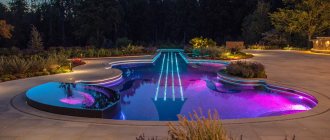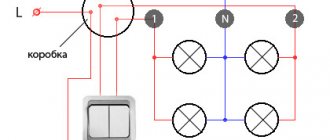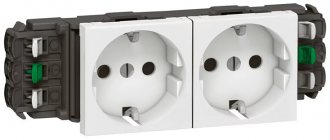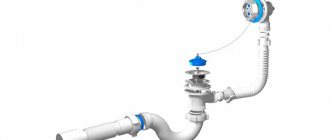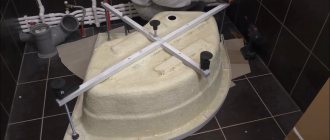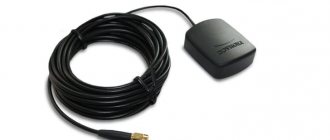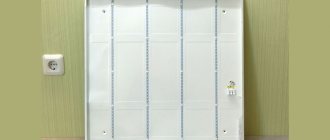System Features
The main feature of bus or track lighting is the ability to move lamps along the ceiling and walls on cables. This allows you to create accent lighting of individual objects and darken those that need to be visually hidden. This function will be especially relevant in shops, museums, and offices.
Using track lighting systems, you can:
- zone spacious rooms, create visual separation;
- provide illumination of work areas;
- make light accents on individual elements;
- highlight the decor on the walls.
Construction: main elements
The track set includes hangers, cable wires, busbars, connectors, and transformers. The tracks have the form of guide profiles into which lighting devices are attached. They are made of plastic, steel, aluminum. Copper bars with a dielectric separator are placed inside. The busbar itself has the form of a string, cable, channel. The standard track length is 1-3 meters, you can shorten the elements if necessary, or connect several into one structure using connectors. The connector shapes are L, T, X, there are also straight and flexible nodes.
For installation of track lamps, special contacts are used. The correct choice of lampshade, lamp shape, and reflector will create a diffused or directed light flux.
Types of systems
Pendant lamps on cables are placed in different quantities - one or several groups go on one busbar. For each phase, you will need to provide separate power, this will help adjust the lighting intensity.
In single-phase sets, all devices are connected to one copper bus. The system is easy to maintain and install. The connectors will help give it the desired shape. A 12 or 220 V network is suitable for powering a single-phase circuit. If the track is low-voltage, the kit includes a step-down transformer. Both components are mounted on a common network. Single-phase tracks are a practical choice for small spaces where the maximum amount of light is not needed.
For spacious rooms, entire sets of lamps are purchased. They will be convenient to install as part of a three-phase system. A set of three busbars (copper) will run inside the busbar; light sources are evenly suspended on the busbars. The phase wiring goes directly to the busbar from the network. A switch is used to transfer voltage between copper busbars. Separately, the lamp is equipped with a wheel, due to the rotation of which the working phase changes. If desired, each wire can be routed to the switch separately. Then you will have three working groups independent from each other.
Important! Lamps for three- and single-phase systems are used differently. They are not interchangeable.
Cable lighting systems for industrial and domestic needs
Cable systems get their name from a cable stretched between two points (from wall to wall), intended for fastening cables. In this case, the load from the distribution boxes is taken on by the structural elements of the room, and an additional cable is used to suspend lamps, which can have a vertical suspension or a combination of horizontal and vertical. The type of lamp suspension allows for general or local lighting.
Pendant lamp on ropes
This method of using a cable system is called industrial and is intended for the utilitarian use of light sources to create uniform lighting close to workplaces. It allows you to avoid the complexity of installation to floors, which in a production room can be represented by beams or trusses, and simplifies maintenance. When installing fluorescent lamps with electronic ballasts, due to their low weight, you can use one tension cable.
In the household version, the cables have a smaller cross-section and resemble a string made of thin fibers of aluminum or copper and are called “string systems”. In string tracks, two cables are functional simultaneously, stretched in parallel at a distance of 3-20 cm from each other (one as zero, and the other as phase).
The most common use of pendant lights in living spaces is in the kitchen. They go well with household appliances and allow you to direct the light flux both to the dining table and to the work area.
These systems can be low voltage or high voltage. The set of low-voltage equipment must include a transformer and a dimmer. For the second ones, which are powered from the network, insulated strings of larger diameter are used to avoid overheating of the current conductor. If the total power of the luminaires is higher than the maximum, then the system is divided into mini-systems connected to each other by insulating elements - connectors. For each section of the system, they install their own transformer.
How to install tracks in offices
Office pendant lights with cables can be suspended, recessed or surface-mounted. For high ceilings (and these are mostly the case in offices), suspended structures are optimal. Track systems are mounted on flexible cables and plumb lines of high rigidity.
If you use overhead fasteners, install the busbar on a wall or ceiling. Tracks are built into suspended ceilings. In this case, the busbar and cables will be invisible, only the lamps will stand out.
For a very small office, we recommend considering not a busbar, but cables and strings as a suspension. The systems are not massive and are suitable for placement in any space. Cables and strings are suitable flexible, insulated, low-voltage type.
Which lamps are classified as cable systems and why?
Initially, standard pendant lights on cables or strings (as the mounting system for household lighting is usually called) were huge structures of impressive weight, used with incandescent lamps, which were characterized by a high level of energy consumption.
Modern industrial lamp on cables
Such lighting was used in industry - for maximum productivity in factory floors, where the lack of sufficient light can not only reduce productivity, but also cause various eye diseases in employees.
Pendant lamps were created on the basis of street lamps from the middle of the last century (50-60s), which swayed on almost all the streets of America and Europe, and city garlands, which are so popular in many countries for the holidays.
Inspired authors came up with lamps on cables, which at first worked great in industry, after which they found their way into the offices of various companies, and from there they migrated to residential buildings.
Given an origin story based on a creative vision
for urban lighting sources, lamps on cables are perfectly combined with more conventional light sources. The usual ones include, for example, white garlands or spot lights, which separately do not have sufficient brightness.
Currently, the scope of use of lamps on cables is practically unlimited - they can be found in a wide variety of establishments - from hospitals to unusual art cafes.
All about choosing lamps
Pendant lights for office track systems must also meet a number of requirements. They provide light either diffused or directed in a narrow beam. To create a narrow beam, spotlights and directional spots are suitable. The dispersion angles are minimal. This is a good solution for highlighting decorative areas, interior items, and other elements.
If you plan to create uniform illumination of the entire area, pay attention to lamps with a significant scattering angle. We are talking about track lamps of diffused light (in the catalogue, the position name is usually written like this).
From a design point of view, lamps are divided into:
- halogens;
- metal halide;
- LED;
- luminescent;
- LN (incandescent).
LEDs are compact, have low energy consumption, provide excellent light, and are durable. But they are expensive, and towards the end of their service life the brightness decreases sharply. This is due to the natural processes of degradation of led elements. LED devices are divided into collapsible and non-dismountable. In the second case, replacing the lamp as necessary will have to be done entirely. Choose a dismountable device if you have a choice - it is easier to maintain, you can only replace the light source, and not the lamp itself.
Incandescent light bulbs and halogen sources provide high-quality, even light, are cheap, but short-lived and not economical. The luminous flux is yellow. Luminescent products have a good quality-to-cost ratio and energy consumption is modest. Color temperature has a wide range, it can be cold, warm, medium. The quality of the light flux often leaves much to be desired, so there may be problems with the disposal of used products (they contain mercury). For offices, fluorescent light bulbs are most often used.
Metal halide is an interesting solution for large spaces. These bulbs provide bright, even, pleasant light. The only downside is that it takes time to warm up and cool down too. That is, the light will not light up immediately, you cannot start it again after turning it off - you need to wait until the device cools down. The light changes during operation - as the resource expires, the stream will acquire a greenish tint. To connect light bulbs you need special equipment. There may be difficulties with disposal for the same reason as in the case of fluorescent lamps - the light source contains mercury vapor.
If you are interested in LED office pendant lights with dimming, check availability when purchasing immediately. The option of smoothly adjusting the brightness of the light flux is not available in every model. The presence of dimming increases the cost of the lamp.
Video
This video will tell you how to make pendant lamps with your own hands.
In the West, pendant lighting has become almost the basis in many private homes, not to mention businesses. Lamps on cables have become extremely popular for a reason.
Unlike chandeliers, sconces and floor lamps, they are ideal for any room and for most interior styles, which makes them the most advantageous choice when planning light and zones of different illumination.
They are quite unpretentious to use, beautiful and comfortable. Such disadvantages as the high price are fully compensated by the quality, and their versatility makes them indispensable assistants both during work and when reading a book at home after a hard day.
Selection rules
If you are looking for pendant office LED lights or fluorescent or any other track systems, follow a set of recommendations. Start with the purpose of organizing the system - placement of accents, general lighting, or all at once. After calculating the optimal number of light bulbs, decide on the type. Decide how you will lay out the tracks, consider the power supply features of the finished system.
Other important points when choosing:
- Manufacturer – Russian, American, and German brands perform well in operation. Don’t be lazy and spend time on selection, read reviews.
- Characteristics of lighting devices - you need color temperature, power, light flux, color rendering (index), pulsation coefficient.
- Static parameters - for constant movements, it would be better to choose a lamp with a spring.
Consider your budget. A variety of options are available for sale. Compare everything, evaluate the costs and make a decision on your choice.
What to consider when installing
Installing tire tracks from scratch is simple. It is done when performing complex repairs. It will be enough to output the voltage, then connect a bus to it, which is mounted on the wall or ceiling. Difficulties usually arise when replacing traditional ceiling chandeliers with a track system.
If you are removing an old chandelier, remove all communications and fastenings. After installing the track on the ceiling, fix it using self-tapping screws, screws, hangers, and cables. Then connect the bus to the power supply. These are not easy jobs; they require certain knowledge and skills. For those who are not confident in their abilities, it would be better to seek help from a professional electrician.
Sequence of actions when installing a new light source:
- Insert the frame into place of the lamp, use suspension chains, cables, and staples.
- Power the device by disconnecting wires of the same colors, then isolate the bare areas.
- Secure the light source until it clicks (the click indicates that the product is in place as needed, plus it is securely fixed).
- Adjust the angle of incidence of the light flux.
Start with the optimal number of track devices according to the calculations performed. In the future, if necessary, deliver new ones.
Track systems are serviceable and repairable. If everything is done correctly, if individual blocks fail, only the blocks can be replaced.
What are rope lights and why are they called that?
Lighting devices are called cable lighting devices due to their specific fastening. A durable cable is stretched from one wall to another, so the entire load falls on the walls or ceiling of the room. An additional cable is used to hang the lamps themselves, which can be vertical or horizontal. Depending on the chosen suspension, these are general or local lighting devices.
This method of operating cable systems is usually called “industrial”: it is associated with the utilitarian use of lamps in order to create the most uniform lighting possible. This approach is especially relevant in industrial premises, the ceiling of which is represented by beams and trusses, since the need for installation to the floors is eliminated.
Note! Due to the small space, fluorescent light sources with electronic ballasts use not two, but one tension cable.
For domestic use, use an aluminum or copper cable of a smaller cross-section, the thickness of which is close to that of a guitar string. Such systems are called string systems. Two strings are stretched parallel to each other, located at a distance of 3 to 20 cm. One string is zero, and the other is phase.
Pendant-type lamps in residential buildings are used mainly in the kitchen. Their design goes well with modern household appliances, and also allows you to change the light flux, directing it to the dining table or work area for cooking.
Systems are also divided into two categories depending on the power source - low voltage and high voltage. Low-voltage equipment is connected through a transformer that reduces the voltage of the industrial network, and a dimmer used to adjust the brightness. High-voltage cable lamps are connected directly to a 220 V industrial network, and to avoid overheating, strings of a larger cross-section are used. If the total power of the operating luminaires exceeds the maximum permissible, the lighting is divided into subsystems connected by special connectors. Each subsystem is connected through a separate transformer.
